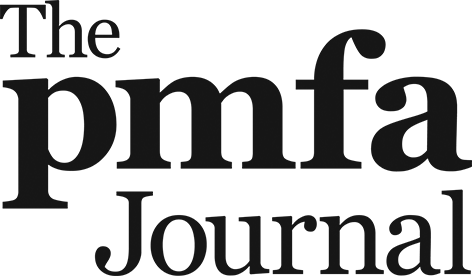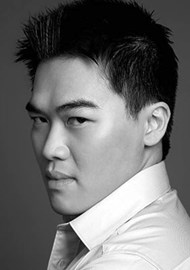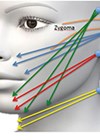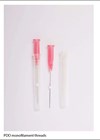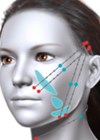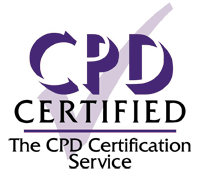Polydioxanone (PDO) and poly-L-lactic / poly-caprolactone (PLL / PCL) threads are presently accessible for facial rejuvenation, and they enjoy significant popularity within aesthetic clinics worldwide, especially in Southeast Asia [1–3]. Often proposed as risk-free with minimal downtime, these threads now have diverse applications beyond facelift procedures, including non-surgical rhinoplasty [4].
In the context of Asian and Afro-Caribbean individuals, with nasal features often exhibiting distinct characteristics, such as a flat nasal bridge, an indistinct nasal dorsum, an under-projected and broad nasal tip, and a relatively short columella, it has been demonstrated that threads are notably successful in enhancing not just the nasal bridge but also in projecting the nasal tip in these individuals. In other groups of patients, threads are promoted as an alternative to surgical hump reduction by masking or camouflaging its appearance.
Due to their popularity and ease of access to aesthetic practitioners offering this procedure, many patients remain oblivious to the potential long-term complications of nasal threads insertion [5–10]. The nose thread lift procedure does not require general anaesthesia, hospitalisation, or an operating room and its cost is significantly lower than that of traditional surgical rhinoplasty. Many medical practitioners therefore downplay the risks involved as there is a huge demand and financial incentive for nasal threads. Moreover, some practitioners may be inclined to promote nose threads as they are not surgeons with the qualifications and skill to perform a surgical rhinoplasty.

Figure 1: Revisiting the history of aesthetic injectable fillers in the early 1900s; a) Specialised syringe and cannulas for paraffin facial injections [11]; b) Schematic diagram for nasal dorsum augmentation with liquid paraffin; c) Lateral view before and after paraffin nasal injection [12]; d) Stepwise technique for correction of a dorsal nasal deformity with paraffin injection [13].
Doctor ‘nose’ best? Learning from history, a cautionary tale
Nasal reshaping dates from the turn of the 19th century when liquid paraffin was used to correct the common ‘saddle nose deformity’, but later proved to be harmful. In 1890, an Austrian doctor Robert Gersuny began experimenting with injecting paraffin wax (a combination of petroleum jelly and olive oil). Promoted as an effective minimally invasive modality (Figure 1) [11–13], today the ill effects of paraffinomas are known and well documented [14]. Yet, let us not forget that this was once all the rage back in the day [14].

Figure 2: Zello-Punkt Nose Reshaper (1894).

Figure 3: Knock off version of nasal shaper in North America.

Figure 4: A patent for nose shaper 1907.
Several years later in 1894, the Zello Universal Nose Shaper (Zello-Punkt Model 21) patented by Professor G Von Eck came into the market (Figure 2). It was purported that the nasal bones and cartilages could be moulded by adjusting a number of grub screws [15]. This led to several copycat versions flooding the European and North American market in the next few decades in response to the demands of customers interested in a non-surgical solution to rhinoplasty (Figures 3, 4). The advent of liquid paraffin as a nasal filler and the device’s own inability to deliver the results gradually resulted in nasal reshaping device’s decline in popularity [15].
Limitations of nose threads
A review published by the American Society of Dermatological Surgery in 2015 revealed that more than 25% of the reported cases of blindness caused by fillers were done in the nasal area [16]. This explains the paradigm shift from the use of fillers to threads in the nasal region.
It would be an error of judgement to think that this article could dissuade either doctors or patients from nose thread rhinoplasty as the procedure is perceived as easier, more economical and safer to perform than a surgical rhinoplasty.
Nose threads can augment the nasal dorsum and can increase projection of the nose. Longer threads at the columella region can rotate the tip if so desired. Threads can also mask or camouflage a small nasal hump or surface irregularities and reduce nasal width. Threads are less likely to migrate and spread laterally as compared to hyaluronic acid fillers. This can be reduced by using ‘harder’ fillers such as calcium hydroxyapatite fillers, but these fillers are not reversible with hyaluronidase, should accidental intravascular injection occur.
Threads cannot however achieve the same refinement of the dorsum and tip or correct any septal deviation as a surgical rhinoplasty can. Nose threads, be it PDO, PLLA, PCL or polypropylene, cannot be viewed as a permanent procedure for any patients, even though many of these threads do not fully dissolve or resorb.

Figure 5: Pre and post PDO threads (note improved height of dorsum, improved projection and de-rotation of tip).

Figure 6: Pre and post PDO threads (note improved nasal dorsum and projection of tip).
While some promote the safety and efficacy of nose threads, complications such as infection, thread extrusion, chronic inflammation, and dimpling remain unacceptably high [5–10]. Furthermore, the extraction of threads from the nasal tip and dorsum results in a weakening of the nasal structure and partial tissue loss, requiring surgical restoration of dorsum and tip support [10]. Performed judiciously, however, nose threads can provide immediate gratifying short-term results as seen in the following patient (Figures 5, 6).
I no longer practice the use of nose threads, but when previously performing non-surgical rhinoplasty with threads, I counselled my patients thoroughly regarding all possible complications. I obtained a comprehensive informed consent [17] emphasising that the procedure does not replace a surgical rhinoplasty and the likelihood that removal of threads will be necessary which itself carries effects on the nose anatomy and structure.
I treated the procedure as surgical, performing it in the operating theatre or ambulatory care setting. We must remember that any laxity in sterility during the procedure increases the likelihood of infection which is one of the major complications in nose threads. It is important to prep and drape the patient judiciously always maintaining sterility. I made sure my sterile gloves did not come in contact with the cogs or threads, as these are all potential sources of contamination. On completion of the procedure, I ensured that there were no protruding ends of threads.

Figure 7: The most common complications encountered are infections and impending extrusions.
These cases are frequently done at aesthetic clinics by aesthetic physicians.

Figure 8: Infection and impending extrusion only six weeks after PCL threads implantation.
Tenderness over the dorsum and tip.
Complications and how to treat them
The sheer number of complications arising from nose threads done at other practices prompted me to question, examine and halt my own nose threads practice (I ceased performing nose threads in 2019). I have since then specialised in treating complications related to nose threads (Figures 7, 8).
Extrusions happen in patients with thin skin and may be exacerbated by weak barbs in the threads. The threads become thick and visible under the skin. Weak barbs in threads can also lead to displacement and migration of threads. Discussion on brands and types of threads and barb strength is beyond the remits of this article.

Figure 9: An open rhinoplasty approach is utilised. Pus was noted and all protruding threads were removed.
Pocket washout with antibiotic solution was performed.

Figure 10: Removal of granulomas and threads. Thread breakage evident Thread breakage
occurs when there is excessive movement and friction or moisture of the threads.

Figure 11: Patient recovered uneventfully after surgical removal of nose threads.
The open rhinoplasty approach is an ideal approach to remove threads, granulomas and to perform a thorough washout of the nasal region (Figures 9–11). My surgical video at https://www.youtube.com/shorts/J4pNqk8mfEw demonstrates removal of nose threads via the open rhinoplasty approach. Dimpling is a common complication of nose threads due to the barbs.
Often there are cases where the patients have had thread procedures done a few years ago presenting for elective aesthetic rhinoplasty. In such cases, these threads have to be identified and removed during the surgery itself especially if a nasal implant is to be placed. In my experience, many of these threads have not dissolved even after two or three years and are found in the nasal cavity (see video at https://youtu.be/ccld2BDwArI).
Lessons and conclusions
The popularity of nose threads is on the rise and all doctors should be aware of the limitations and complications that may arise from this procedure. The nose thread lift is still very popular and while this is indeed the trend just now, history has shown us that many procedures are later abandoned when the long-term consequences are known. A case in point being paraffin and silicone injections to the nose and ‘nasal reshaping’ devices of the 18th century. If there is anything we should be cognisant about it is that history always repeats itself.
Data on the safety profile and long-term results of nose threads are lacking. The procedure enjoys unprecedented popularity with aesthetic physicians who specialise in non-invasive and minimally invasive procedures. The unprecedented popularity of nasal threads naturally comes with increased incidents of complications. Nose threads complications (such as infections, abscesses, granulomas, migration and extrusion) must always be managed by surgical removal of the offending foreign body which are the nasal threads. The dilemma with regards to nose threads is “To thread or not to thread?” That is most definitely the question. It is wise for the aesthetic practitioner to tread with caution.
References
1. Lee HY, Yang HJ. Rhinoplasty with barbed threads. Plast Reconstr Surg Glob Open 2018;6(11):e1967.
2. Kang SH, Moon SH, Kim HS. Nonsurgical rhinoplasty with polydioxanone threads and fillers. Dermatol Surg 2020;46(5):664–70.
3. Sulamanidze C, Lanfranchi L, Diaspro A. Thread lifting of the nose: fully comprehensive approach to the technique. Plast Reconstr Surg Glob Open 2023;11(4):e4907.ID: PMC10069852.
4. Sulyman O, Cristel R, Gandhi N, et al. Non-surgical rhinoplasty using polydioxanone threads. J Cosmet Dermatol 2024;23(1):199–206.
5. Kim KS, Min HJ. Benign nasal mass as a delayed complication of barbed thread rhinoplasty. J Craniofac Surg 2022;33(5):e503–5.
6. Chen Y, Hu J, Xing J, et al. Complications following thread rhinoplasty. J Cosmet Dermatol 2022;21(10):4722–6.
7. Lee DW, Ryu H, Jang SH, Kim JH. Clinical features and literature review related to the material differences in thread rhinoplasty: Two case reports. World J Clin Cases 2021;b:9635–44.
8. Chen Y, Hu J, Xing J, et al. Complications following thread rhinoplasty. J Cosmet Dermatol 2022;21(10):4722–6.
9. Wang YF, Wang CC, Liu KL. A woman’s secret. Filler rhinoplasty with Radiesse (Merz Aesthetics, San Mateo, CA) and gold thread implantation. Ann Emerg Med 2013;62(3):224, 234.
10. Jin HR, Kim SJ. Presentation patterns and surgical management of the complications of thread rhinoplasty. Clin Exp Otorhinolaryngol 2022;15(3):247–53.
11. Ballenger WL. Diseases of the Nose, Throat and Ear, Medical and Surgical. Philadelphia & New York, USA; Lea & Febiger: 1911.
12. Kolle F. Plastic and Cosmetic Surgery. New York, USA; D Appleton and Company: 1911.
13. Miller CC. The limitations and the use of paraffin in cosmetic surgery. Wisc Med Rec 1908;11:333–8.
14. Khoo B-C. Paraffinoma. Plast Reconstr Surg 1965;36:101–10.
15. Lübbers W. Nasenumformung vor 100 Jahren, Die “goldene Nase”. HNO-Nachrichten 2006;42(1):62–3.
16. Beleznay K, Carruthers JD, Humphrey S, Jones D. Avoiding and treating blindness from fillers: a review of the world literature. D Dermatol Surg 2015;41(10):1097–117.
17. Khoo LS, Mazzarone F. Informed consent and failure to disclose – Legal perspectives for aesthetic surgeons. The PMFA Journal 2016;4(1):14–8.
Declaration of competing interests: None declared.
COMMENTS ARE WELCOME
